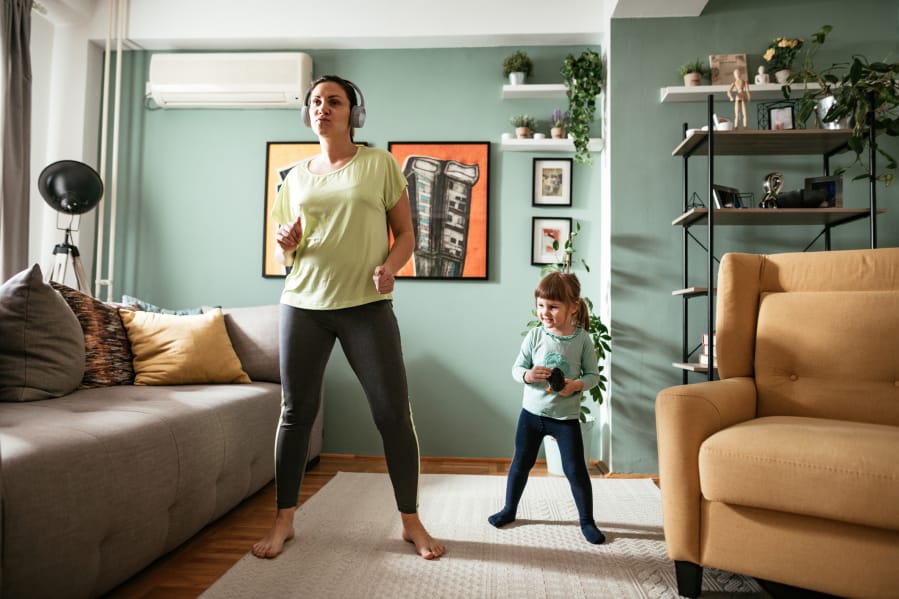When the pandemic started, we sat too much, ate too much and drank too much. But trainer/dietitian Anika Christ says it’s time to quit using COVID-19 as an excuse. Sure, the pandemic disrupted our lives, but we’ve had six months to develop new routines, so that excuse doesn’t cut it anymore.
“As people, we like excuses as a way of getting out of doing something,” said Christ, a personal trainer, registered dietitian and certified sports nutritionist at Life Time fitness. “So everyone blamed COVID” for abandoning their good exercise and eating habits. And now we’re paying the price.
“We’re not as fit as we were before,” she said. “We’re not as healthy.”
She understands the situation. Like many of us, she was quarantined at home, where she was overseeing her 7-year-old’s remote learning while also tending to a toddler. Her daily routines fell by the wayside. But now, she says, it’s time to get back on the fitness track, and that means doing more than just sitting around — literally — waiting for the pandemic to pass.
“We realize now that this could be for the long term,” she said. “We want to get into a routine again.”
One thing we’ve learned the last six months is that we’re much more flexible than we might have thought. Not necessarily in terms of touching our toes, perhaps, but in adapting to changing conditions.
“Six months ago, I never would have thought about taking a video training session,” she admitted. Now she’s a regular in a 6 a.m. streaming class, and she loves it.
“I roll out of bed, go downstairs and turn on my laptop. I don’t have to worry about making sure my kids are OK. I don’t have to worry about a snowstorm keeping me from getting to the club on time,” she said. “And I know there are six other women (in the class) waiting for me to show up, making me accountable.”
The fitness industry was walloped by the stay-at-home directives. With the gyms and fitness centers closed, they focused on new ways of connecting with members, including fitness apps and workouts that could be done at home with a minimum amount of gear, something Christ referred to as “omnichannel fitness.”
Trainers also are using technology to connect one-on-one with clients. As convenient as online training sessions are, “nothing can replace that real person,” she said. Trainers can alert someone when their form is faulty and offer individualized advice on things like the proper resistance and number of reps a person should be doing.
While exercise fads come and go with the speed of an Olympic sprinter, Christ expects several of the pandemic-related changes to take root.
One is an increased emphasis on keeping the gear in health clubs clean. That’s always been a priority, she said, but it’s more visible now, with members also taking responsibility for wiping down equipment before and after they use it. Another is that stress relief, including yoga, Pilates and meditation, will be integrated into fitness routines.
“We’ve done a lot of stress eating” during the pandemic, she said. “Exercise is the best stress relief medicine.”
Flu season is here, and some medical experts predict that a second wave of COVID-19 is on the way, too. Christ is hopeful that we can take the things we’ve learned the last six months to keep ourselves healthier in the next six months.



